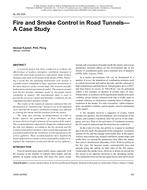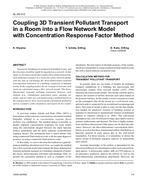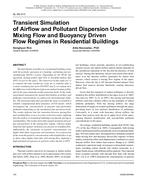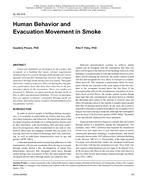-
-
Available Formats
- Options
- Availability
- Priced From ( in USD )
-
Available Formats
-
- Immediate download
- $16.00
- Add to Cart
Customers Who Bought This Also Bought
-

SL-08-029 -- Fire and Smoke Control in Road Tunnels - A C...
Priced From $16.00 -

SL-08-012 -- Coupling 3D Transient Pollutant Transport in...
Priced From $16.00 -

SL-08-013 -- Transient Simulation of Airflow and Pollutan...
Priced From $16.00 -

SL-08-016 -- Human Behavior and Evacuation Movement in Smoke
Priced From $16.00
About This Item
Full Description
The concept of the Measurement and Verification (M&V) of a new building is becoming more important because efficient design alone is often not sufficient to deliver an efficient building. However, there is a lack of standard M&V methods to measure the performance of a new building that has Energy Conservation Design Measures (ECDMs), including the selection of the base-case building. This study presents an enhanced method based on calibrated whole-building simulation (Song and Haberl 2007) for evaluating the energy performance of new commercial buildings and demonstrates its use using a case-study building, including: an Energy Use Index (EUI) comparison with sub-metered data, a comparison against ASHRAE Standard 90.1-1989 and Standard 90.1-2001, and an evaluation of the performance of specific ECDMs (i.e., ECDM-subtraction). The use of these methods has allowed us to determine that the case-study building is 20.79% more efficient than Standard 90.1-1989 and is compliant with Standard 90.1-2001 (i.e., 2.17% less annually). Using an ECDM-subtraction method, the case-study building was shown to use approximately 46.7% less energy than a basecase building that has the same shape and function as the case-study building (i.e., calibrated as-built simulation model), but doesn’t include the simulated ECDMs.
Units: Dual





